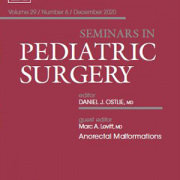Early promise of sphincter reconstruction for Hirschsprung disease

A team of surgeons, led by international pediatric colorectal expert Marc Levitt, M.D., has developed a new surgical approach to tighten, or reconstruct, the sphincters of Hirschsprung patients who have true fecal incontinence after a pull-through procedure.
A team of surgeons, led by international pediatric colorectal expert Marc Levitt, M.D., has developed a new surgical approach to tighten, or reconstruct, the sphincters of Hirschsprung patients who have true fecal incontinence after a pull-through procedure.
Early cases using this approach were outlined in a study published in the Journal of Pediatric Surgery. Though only performed in a handful of patients so far, the authors write, “We feel confident to offer this procedure to other patients with a similar anatomic concern.”
The people who care for Hirschsprung disease patients, including the team at the Pediatric Colorectal and Pelvic Reconstruction Division at Children’s National, continue to seek better approaches for these issues because soiling and fecal incontinence are rare but devastating complications that can occur after children have a pull-through procedure.
“In the presence of an intact continence mechanisms, the anal sphincters and the dentate line, patients with Hirschsprung disease should do well and have bowel control. For some with soiling, this can be improved with treatment of constipation or hypermotility,” the authors write. “However, patients with a damaged anal canal and/or sphincter mechanism are unable to sense stool and distension of the neorectum or hold the stool in, which can lead to true fecal incontinence.”
Currently, there is no optimal treatment for the fecal incontinence that these patients experience. This repair procedure pioneered by surgeons at Children’s National offers a promising option to help get children with Hirschsprung disease one step closer to a happier, less stressful life.











